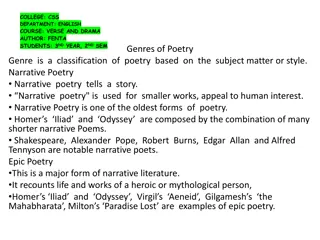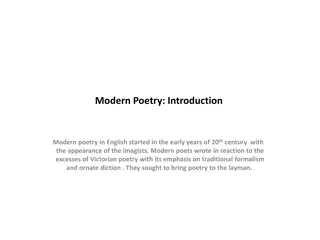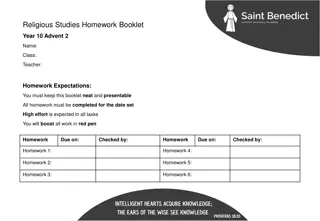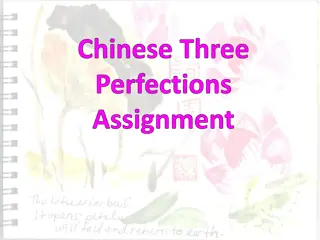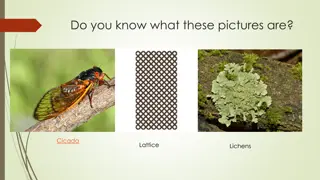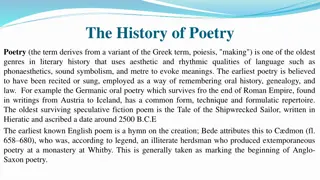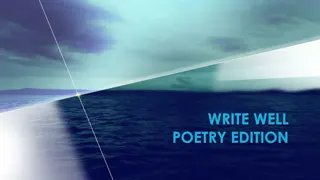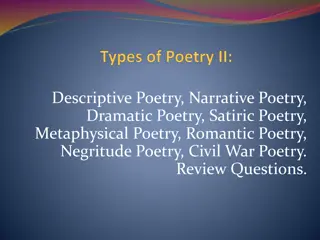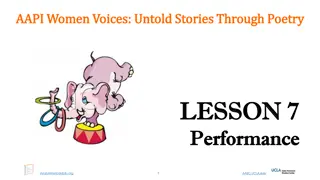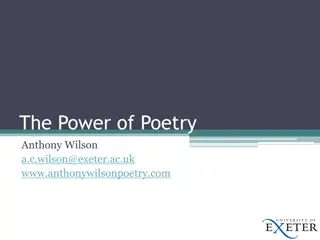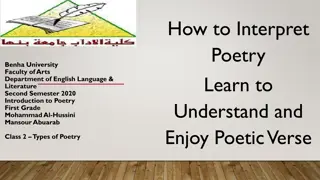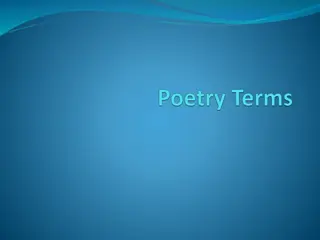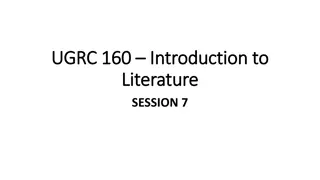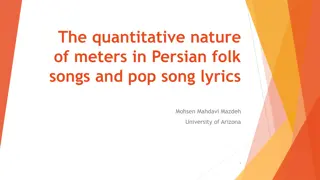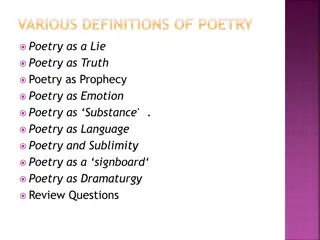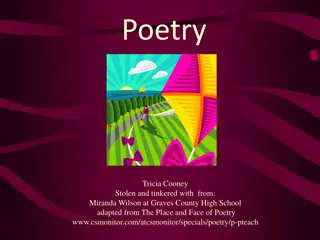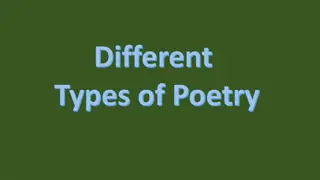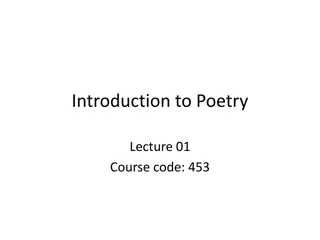Unveiling the Beauty of Poetry: Elements and Interpretations
Delve into the captivating world of poetry through examining key elements such as form, imagery, stanzas, rhythm, rhyme, mood, and tone. Explore how the title, structure, and language of a poem contribute to its overall meaning and impact. Embrace the vivid imagery, the rhythmic flow, and the emotional depth that poetry offers, and learn to appreciate the intricacies of this art form.
Download Presentation

Please find below an Image/Link to download the presentation.
The content on the website is provided AS IS for your information and personal use only. It may not be sold, licensed, or shared on other websites without obtaining consent from the author.If you encounter any issues during the download, it is possible that the publisher has removed the file from their server.
You are allowed to download the files provided on this website for personal or commercial use, subject to the condition that they are used lawfully. All files are the property of their respective owners.
The content on the website is provided AS IS for your information and personal use only. It may not be sold, licensed, or shared on other websites without obtaining consent from the author.
E N D
Presentation Transcript
The Joys of Poetry
Key Elements to Watch for in a Poem Title Form Imagery Stanzas Rhythm Rhyme Mood Tone
Title Part of the poem itself, not a separate entity How does it add to the poem s meaning?
The Eagle He clasps the crag with crooked hands; Close to the sun in lonely lands, Ring d with the azure world, he stands. The wrinkled sea beneath him crawls; He watches from his mountain walls, And like a thunderbolt he falls. - Alfred, Lord Tennyson
Form The physical structure of the poem Questions to ask yourself: Why might the author have chosen to structure it that way? Does it reveal anything new about the poem?
Easter Wings Lord, Who createdst man in wealth and store, Though foolishly he lost the same, Decaying more and more, Till he became Most poore: With Thee O let me rise, As larks, harmoniously, And sing this day Thy victories: Then shall the fall further the flight in me. My tender age in sorrow did beginne; And still with sicknesses and shame Thou didst so punish sinne, That I became Most thinne. With Thee Let me combine, And feel this day Thy victorie; For, if I imp my wing on Thine, Affliction shall advance the flight in me -George Herbert
Imagery Words or phrases that appeal to the 5 senses Go for as many of the senses as possible when writing a poem!
Stanzas A grouping of 2 or more lines within a poem
Rhythm and Rhyme Rhythm: The pattern of stressed and unstressed syllables in a line. Ex: Not all poems have a rhyme scheme, but when they do, you use the letter system to identify it. Roses are red, A Violets are blue. B Sugar is sweet, C And so are you. B
Mood and Tone Mood: how the poem makes the audience feel Depressing, joyful, sad, suspenseful Tone: how the author feels toward the subject/topic Angry, sarcastic, sad, distant, hopeful

 undefined
undefined











